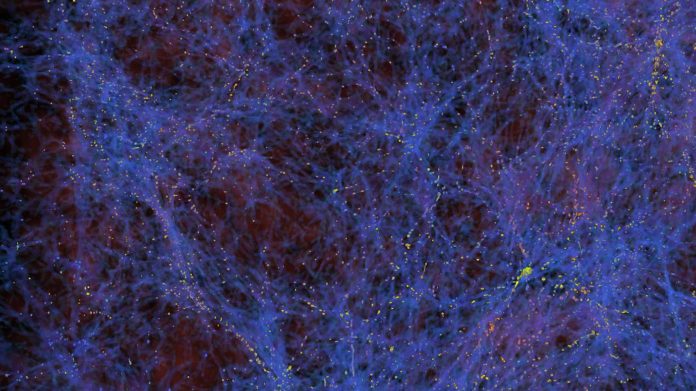It is a complete mystery. But it is an important mystery. It turns out that roughly 68% of the universe is dark energy. Dark matter makes up about 27%. The rest – everything on Earth, everything ever observed with all of our instruments, all normal matter – adds up to less than 5% of the universe.
For years, scientists have been trying and failing to spot the invisible stuff that makes up the majority of matter in the universe. But now researchers have a new target: a comparatively heavy and long-lived particle that may be produced by the high-energy collisions at the LHC.
The particle is thought to be Higgs Boson. After finding this mysterious particle, scientists working with the Large Hadron Collider are looking to discover another needle in a haystack – dark matter.
LianTao Wang, a University of Chicago professor of physics who studies how to find signals in large particle accelerators like the LHC said, “All around us is dark matter and dark energy—the invisible stuff that binds the galaxy together, but which no one has been able to directly detect. We know for sure there’s a dark world, and there’s more energy in it than there is in ours.”
According to scientists, they may be able to lead us to its tracks. What’s more, they also have laid out an innovative method for stalking dark matter in the LHC by exploiting a potential particle’s slightly slower speed.
Theorists think there’s one particular kind of dark particle that only occasionally interacts with normal matter. It would be heavier and longer-lived than other known particles, with a lifetime up to one-tenth of a second. A few times in a decade, scientists believe, this particle can get caught up in the collisions of protons that the LHC is constantly creating and measuring.
Wang said, “One particularly interesting possibility is that these long-lived dark particles are coupled to the Higgs boson in some fashion—that the Higgs is actually a portal to the dark world. It’s possible that the Higgs could actually decay into these long-lived particles.”
But how to trap the dark particle among the billions of collisions happening at the LHC every second? Liu, the first author of the study, thinks that such a dark particle would be heavier and thus travel slower than the speed of light. That would keep it separated from the others.
Scientists have proposed a new way to search by exploiting one particular aspect of such a dark particle. The method devised by the scientists would zero in on such particles that decay at a lower rate.
Liu said, “We anticipate this method will increase our sensitivity to long-lived dark particles by more than an order of magnitude—while using capabilities we already have at the LHC.”
“Experimentalists are already working to build the trap: When the LHC turns back on in 2021, after boosting its luminosity by tenfold, all three of the major detectors will be implementing the new system. We think it has great potential for discovery.”
Wang said, “If the particle is there, we just have to find a way to dig it out. Usually, the key is finding the question to ask.”
The study is published in the journal Physical Review Letters.
